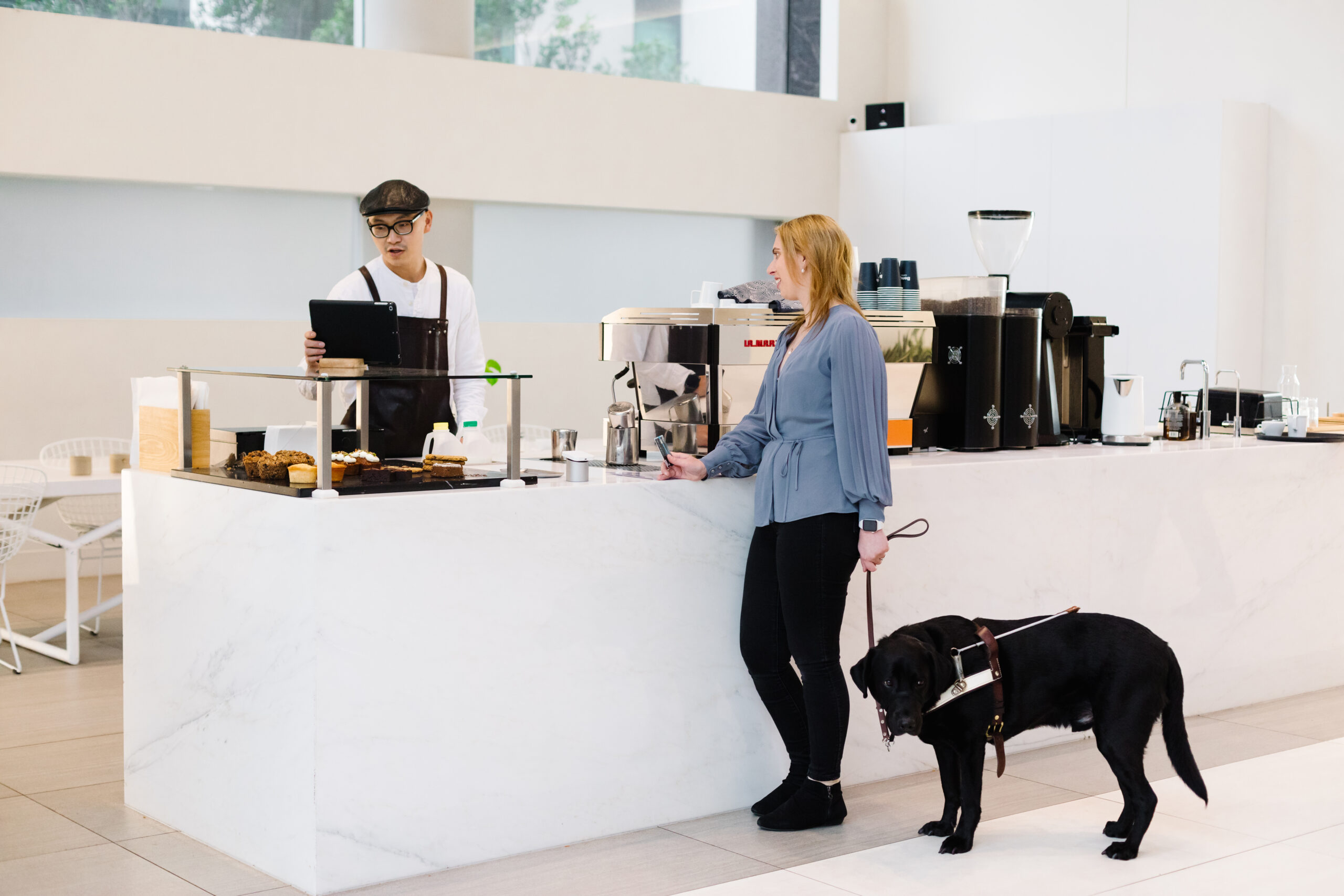The Business Case for Disability Inclusive Employment in Australia

Building an Inclusive Workplace: The Key Role of Disability Inclusion.
Disability inclusion in employment offers numerous benefits that significantly enhance an organisation’s innovation, productivity, and overall employee satisfaction. In Australia, the business case for disability-inclusive employment is stronger than ever. By prioritising disability inclusion, companies can tap into a diverse talent pool, drive creativity, and foster a culture of inclusivity that resonates with both employees and customers. This blog explores the compelling reasons why businesses in Australia should make disability inclusion a cornerstone of their employment strategy to cultivate a truly inclusive workplace culture.
The Importance of Disability Inclusion
Diverse Perspectives Fuel Innovation
Integrating diverse perspectives, especially those from employees with disability, is a catalyst for creativity and innovation. Employees with disability contribute unique problem-solving abilities and viewpoints that can lead to groundbreaking solutions and advancements. This diversity of thought is essential for businesses aiming to maintain a competitive edge and adapt to evolving market needs.
In Australia, organisations that embrace diverse perspectives, including those provided by employees with disability, experience tangible benefits:
- Higher Innovation Revenue: Companies with higher diversity in management report up to a 19% increase in innovation revenue [Diversity Council Australia, Inclusive Industry: How Diversity Benefits Business, 2021].
- Increased Problem-Solving Capacity: Workplaces that are diverse and inclusive are 1.8 times more likely to be able to solve complex problems [Diversity Council Australia, Inclusion@Work Index 2019-2020].
- Enhanced Team Performance: Teams that are inclusive of employees with disability are 29% more likely to exhibit superior performance in workplace roles [Australian Network on Disability, How Hiring People with Disability Can Affect Your Workplace, 2018].
- Innovation & Customer Focus: Diverse teams are 12% more creative and 36% more likely to outperform in terms of profitability [Diversity Council Australia, Why Diversity Matters].
Boosted Employee Engagement and Retention
An inclusive workplace, where all employees feel respected and supported, significantly elevates employee engagement and retention rates. Employees are more inclined to stay loyal and committed to organisations that genuinely embody inclusive values. This heightened retention translates to reduced turnover costs and bolstered organisational stability.
- Enhanced Employee Engagement: Inclusive organisations can enhance employee engagement by up to 5.5 times, reduce turnover rates, and improve workplace morale [Accenture, Getting to Equal 2018: The Disability Inclusion Advantage].
- Enhanced Productivity & Lower Absenteeism: A JobAccess study revealed that employees with disability have an average absence rate 3.4% lower than their non-disabled counterparts [JobAccess, The compelling case for disability employment in Australia, March 2023].
Broadened Talent Pool Access
Adopting disability inclusive employment strategies expands access to a vast talent pool. With over 4.4 million Australians living with disability, many possess a high level of skill and eagerness to contribute to the workforce. By dismantling employment barriers, businesses can tap into this underutilised talent reservoir, addressing skill shortages and enhancing overall productivity.
- Expanding Talent Pool: In Australia, approximately 4.4 million people live with a disability, comprising a significant talent pool — nearly 17% of the population [Australian Bureau of Statistics]
- Skilled Candidates: Among Australians with disability, 1 in 5 holds a bachelor’s degree or higher qualification, which equates to nearly 788,000 skilled individuals ready to contribute their expertise to various sectors [Australian Institute of Health and Welfare, People with Disability in Australia, 2020].
Compelling Business Case for Disability Inclusive Employment
Enhanced Corporate Reputation
Businesses that are recognised for their inclusive culture and steadfast commitment to disability inclusion often enjoy an elevated corporate reputation. This favourable image can attract top-tier talent, engender customer loyalty, and forge strong community relationships. In Australia, where corporate social responsibility is increasingly appreciated, manifesting inclusive values can substantially enhance brand perception.
- Corporate Reputation: 82% of consumers in Australia prefer to support brands that demonstrate a commitment to diversity and inclusion, including disability inclusion [Reconciliation Australia, Australian Reconciliation Barometer 2020]. This preference for inclusive companies underscores the significance of maintaining an inclusive and diverse workforce.
- Customer Loyalty: According to a report by the Australian Human Rights Commission, 86% of Australians believe businesses should play an active role in promoting equality and inclusion [Australian Human Rights Commission, Business & Human Rights 2021].
- Business Performance: Companies that are perceived as inclusive and socially responsible are 2.3 times more likely to see enhanced productivity and profitability [Diversity Council Australia, The Inclusive Workplace Index 2021].
- Brand Loyalty: 67% of Australian consumers stated they are more likely to remain loyal to brands that promote diversity and inclusion [KPMG Australia, Diversity and Inclusion in Action, 2022].
- Public Perception: Organisations recognised for their commitment to disability inclusion experience a 20% increase in positive public perception both online and offline [University of Sydney Business School, Impact of Corporate Social Responsibility on Public Perception, 2021].
Financial Gains and Government Incentives
There are tangible financial rewards tied to disability employment. Companies may become eligible for government incentives and grants designed to promote workplace diversity and inclusion. Moreover, inclusive practices can lead to reduced absenteeism and healthcare costs, as inclusive workplaces frequently support improved mental and physical health outcomes for all employees.
- Financial Incentives: The Australian Government offers various financial incentives for hiring people with disability. The Employment Assistance Fund can cover up to 50% of eligible salary and wage costs in the first year of employment [Australian Government Department of Social Services].
- Reduced Workers’ Compensation Costs: Research indicates that employees with disability experience 21% fewer work-related injuries compared to those without disability [Australian Network on Disability, Benefits of employing people with a disability].
- Higher Shareholder Returns: Companies leading in disability inclusion are twice as likely to achieve higher total shareholder returns [Accenture, Getting to Equal 2018: The Disability Inclusion Advantage].
- Increased Revenue & Profit Margins: Organisations that practice disability inclusion can achieve 28% higher revenue and 30% greater profit margins [Accenture, Getting to Equal 2018: The Disability Inclusion Advantage].
- Market Expansion: Diverse teams, including those with employees with disability, are 70% more likely to capture new markets and 45% more likely to improve their market share [Diversity Council Australia, Why Diversity Matters].
Constructing an Inclusive Workplace Culture
1. Crafting Inclusive Policies and Practices
To nurture an inclusive culture, businesses must develop and enforce policies that endorse disability inclusion. This entails accessible recruitment processes, reasonable accommodations, and continuous support for employees with disability. Regular training on inclusive values and disability awareness is pivotal to ensure all employees comprehend and uphold these principles.
2. Harnessing Technology for Accessibility
Modern technology provides a plethora of tools to improve workplace accessibility. From screen readers and voice recognition software to accessible web design, leveraging these technologies can substantially enhance the work experience for employees with disability. Investing in these tools demonstrates a commitment to creating a more inclusive workspace.
3. Promoting Open Dialogue and Feedback
Cultivating an inclusive culture necessitates open communication and continuous feedback from all employees. Encouraging staff to share their experiences and suggestions for improvement helps identify and eliminate barriers to inclusion. This ongoing dialogue fosters a sense of belonging and empowerment among the entire workforce.
Leveraging Expert Support from Get Skilled Access
As businesses strive to foster an inclusive workplace, expert guidance is invaluable. At GSA, we are more than consultants; we are people with disability, lived experiences, and allies of disability inclusion. Our professional expertise and authenticity uniquely position us to guide your organisation on its inclusive journey.
Inclusive Recruitment
Develop the knowledge and access the tools needed to nurture a diverse and inclusive workforce. Enhance your recruitment strategies, eliminate unconscious biases, and leverage the unique abilities of people with disability – ultimately driving innovation and growth.
Our session encompasses a wide range of topics, including:
- The business case for hiring people with disability
- Understanding and overcoming unconscious bias
- Equipping your team with the knowledge and strategies to effectively implement inclusive hiring practices
- Cultivating an inclusive culture and fostering a creative environment enriched by diverse perspectives
- Dispelling common myths about hiring people with disability
- Interactive Q&A

Disability Confidence and Capability Building
Our comprehensive session equips participants with a solid understanding of disability and accessibility in both workplace and community contexts. We focus on developing the skills necessary to foster a more inclusive environment for people with disability.
Key topics covered include:
- Defining disability, accessibility, and inclusion: understanding the differences
- Enhancing your team’s skills and embracing diverse perspectives to boost creativity
- Addressing misconceptions, stereotypes, and unconscious bias
- The language of disability
- Medical and social models of disability
- Interactive Q&A

Embracing disability inclusion is not just a social responsibility; it’s a pivotal business strategy that drives innovation, enhances employee engagement, and delivers financial benefits. By prioritising disability-inclusive employment, Australian businesses can secure a competitive edge while fostering a diverse and inclusive culture.
By integrating these principles, we can create a more equitable and inclusive future for all. Join us on this mission and make a tangible difference in the lives of people with disability.
For comprehensive guidance on implementing effective disability inclusion strategies, visit our services page. By dedicating themselves to disability inclusion, businesses in Australia can unlock the full potential of their workforce, paving the way for a more equitable and prosperous future for all.
